
- News
- Basics
- Products
- JP Job shop
- Exhibition
- Interview
- Statistic
- PR
- Download
- Special contents
Exhibition
April 24, 2023
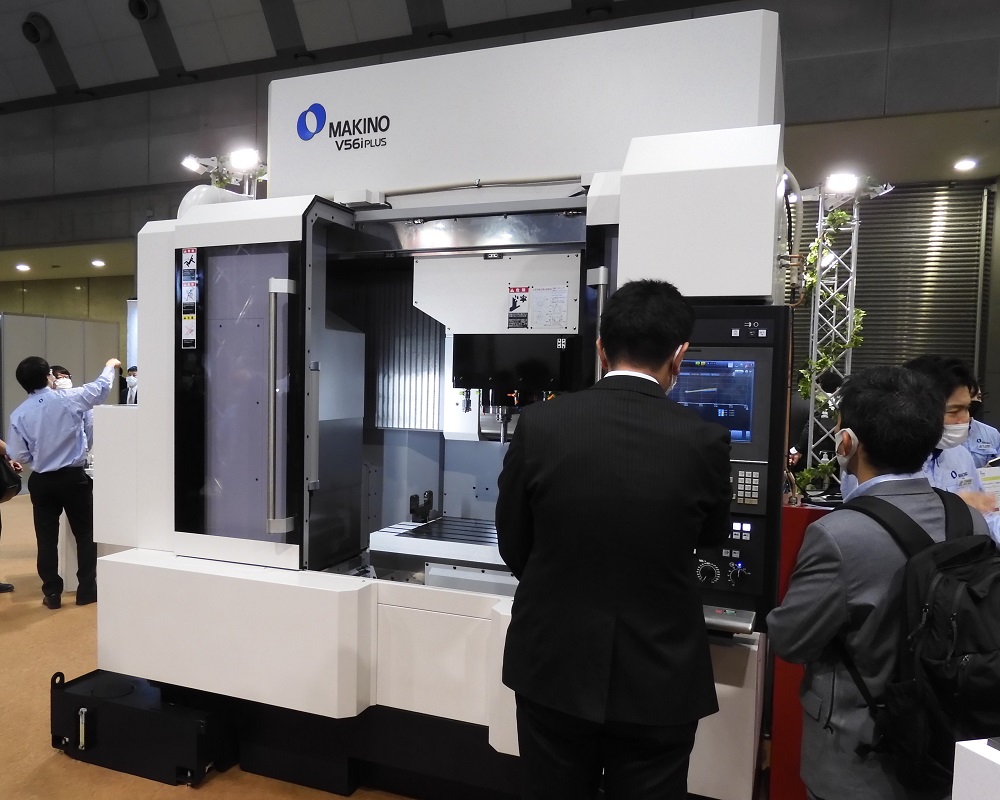
INTERMOLD 2023 was held April 12-15 at Tokyo Big Sight in Tokyo, Japan, with 409 companies and organizations exhibiting. The four-day event attracted approximately 40,000 visitors and was the first time in four years that it was held without major restrictions due to the COVID-19 pandemic. At the company booths, exhibitors and visitors exchanged information and engaged in lively business discussions.
INTERMOLD was held in Tokyo for the first time in two years. Satoru Koide (President of KOIDE), Chairman of the Japan Die & Mold Industry Association, one of the organizers of the event, remarked, “The world has changed dramatically due to the pandemic, and the die and mold industry needs to change as well. It is therefore important to have access to live information and exchange of ideas. I am glad that we are able to hold this event without restrictions at this time”.
In the die and mold industry, where the demands for machining accuracy and surface quality are increasing year by year, the proposals for achieving simple, high-precision machining stood out.
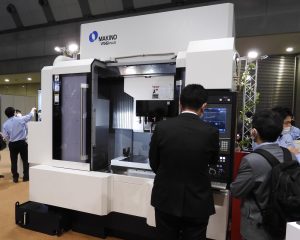
Makino Milling Machine demonstrated correction functions with its “V56 iPLUS”.
Makino Milling Machine exhibited its “V 56i PLUS” vertical machining center (MC). The machine is equipped with “eSTABILIZER” technology for stable machine control. Temperature sensors installed throughout the machine detect temperature changes. Based on the changes, the machine’s deformation is automatically compensated to maintain machining accuracy. The system learns the customer’s operating environment and makes the appropriate corrections for that workstation. In a test on an actual machine at the company, the error was kept within ±3 μm even when the room temperature changed by 9 degrees Celsius. Shotaro Miyazaki, President, commented, “We have been working to achieve both energy conservation and high-precision machining for the past 10 years, so we have the technology at hand. From now on, we will focus on promoting awareness of this technology among our customers”.
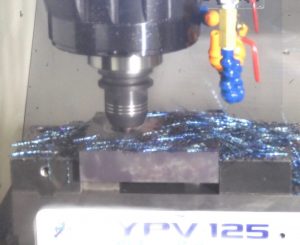
Yasuda demonstrated practical machining with the YBM 950V.
YASDA PRECISION TOOLS gave a machining demonstration at the venue using its “YBM 950V ver” vertical jig borer. Rough machining was performed on high-speed tool steel with a Rockwell hardness of HRC56 after quenching. Visitors were fascinated by the high feed rate and the large amount of chips produced.
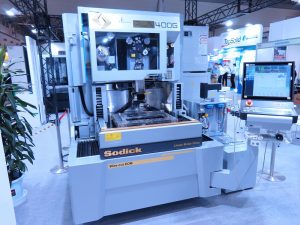
Sodick promotes the “AL400G.
Sodick exhibited the “AL400G” wire EDM machine, equipped with the “iGroove+Edition”, a mechanism that rotates the wire. By rotating the wire as it is fed, a new surface is always in contact with the workpiece. This system helps reduce wire consumption and stabilize machining accuracy.
Seibu Electric & Machinery exhibited the “MM50UP”, a wire EDM equipped with functions to support operation and maintenance. The operator can watch videos on the control panel screen to learn how to replace wires and maintenance parts. The company’s sales staff explained, “Anyone can easily perform high-precision machining”.
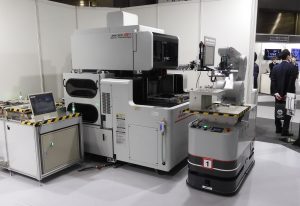
Mitsubishi Electric combines electric discharge machine with AMR.
Automation proposals also caught the attention of visitors. Mitsubishi Electric combined its MP1200 wire EDM with an autonomous mobile robot (AMR). The AMR is linked to the EDM’s machining schedule and handles the transfer of workpieces. The combination of the MP1200 and the AMR makes it possible to build a highly flexible automation system. “It can be implemented without changing the layout of the factory,” said the person in charge of the project.
FANUC also demonstrated a “ROBOCUT” wire EDM that automatically feeds workpieces to a collaborative robot.
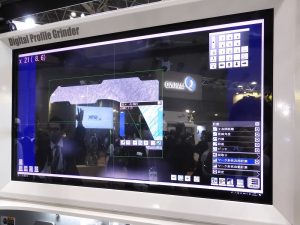
Amada Machinery’s “DPG-150” automates measurement.
Using robots is not the only way to automate. Amada Machinery exhibited the “DPG-150” profile grinding machine. It automates the measurement of workpiece size and other parameters by incorporating digital technology into the workpiece projection function. It can also correct errors based on the measurement results and perform follow-up machining.
Hexagon, the world’s leading manufacturer of measuring and other equipment, presented a mold repair example that it is developing with Yamazaki Mazak. The company is using Yamazaki Mazak’s multitasking machine with additive manufacturing (AM) capability. When a defective mold is set, the machine first takes laser measurements. Then, the defective parts are found by comparing CAD data, etc., and the defective parts are repaired by AM machining. After that, the mold is finished by cutting. Since the repair area is identified and filled, there is minimal waste. The repair is completed in a single setup.
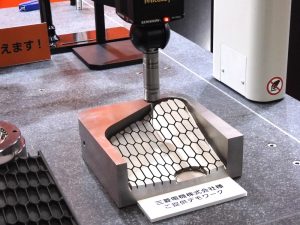
Mitutoyo proposed a method for measuring only rib grooves with a touch probe.
Mitutoyo proposed the measurement of molds using both touch probe and laser measurement with the “CRYSTA-Apex” 3D measuring machine. In the case of plastic molds, deep grooves are machined to form ribs to increase the strength of the mold. In laser measurement, the laser beam cannot reach the inside of the groove. By using the touch probe only in the necessary area, the work can be done more efficiently.
In cutting tools area, many proposals were made for high-efficiency machining and micro-precision machining.
MOLDINO exhibited the “ER5HS” end mill for high-efficiency side machining. This product is designed to promote a shift from contour line machining with a bottom edge, which is common in Japan, to side machining with a large depth of cut in the rough machining of dies and molds. The person in charge explained, “Shorter machining time means less machine operating time, and energy is saved.
IWATA TOOL exhibited its “Drimill”, an end mill for helical hole drilling with a tool diameter of 0.2 mm, as a reference exhibit. Helical machining, in which the tool moves in a spiral shape using the side edge of the end mill, has a strong image of high efficiency. This time, however, it was developed for high-precision machining. According to Masanao Iwata, president of IWATA TOOL, the helical machining with compensation on the machine enables precise hole diameters. “We can even aim for ±1μm,” he said.
NS TOOL exhibited the “SMB200”, a two-flute ball end mill that was launched in April 2023. The standard product has a minimum ball radius of 0.01 mm. It is coated with cubic boron nitride (CBN) and is suitable for workpieces as hard as HRC55 or higher. “There is a demand for corner shapes that are as close to right-angled as possible in molds and battery-related applications. So, we developed a product that is small, hard and has a long tool life,” said the person in charge of development.
August 24, 2020
March 31, 2023
December 5, 2022